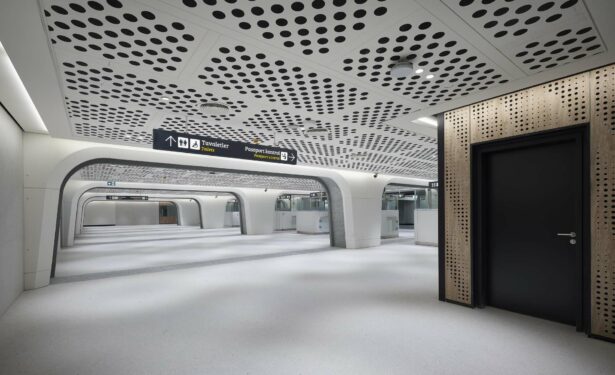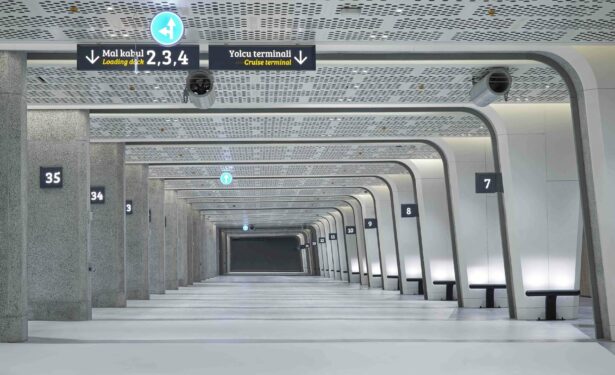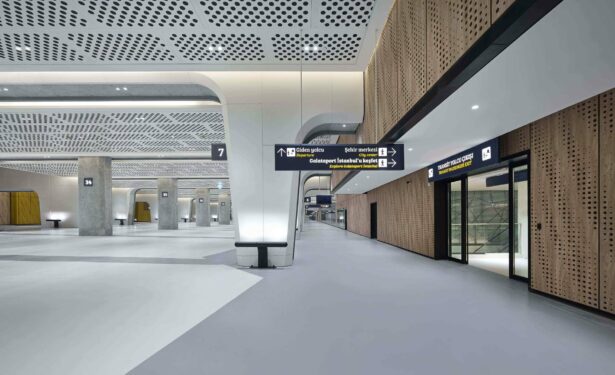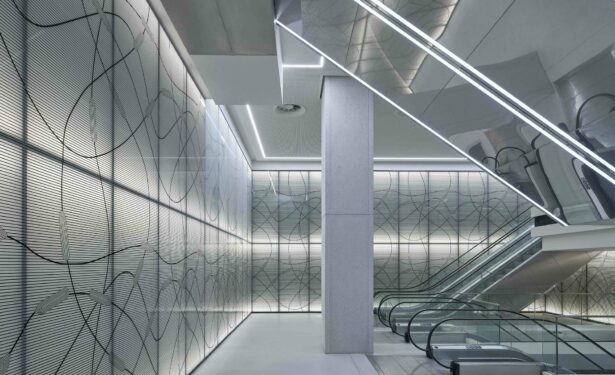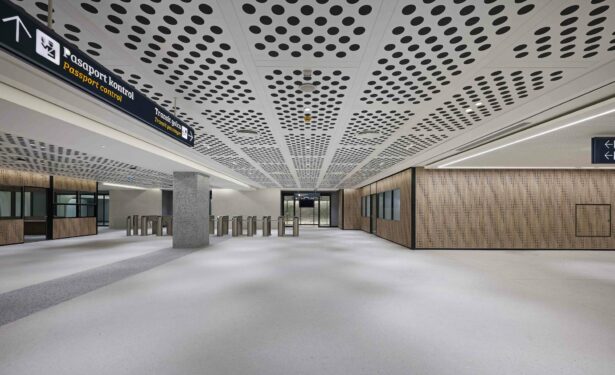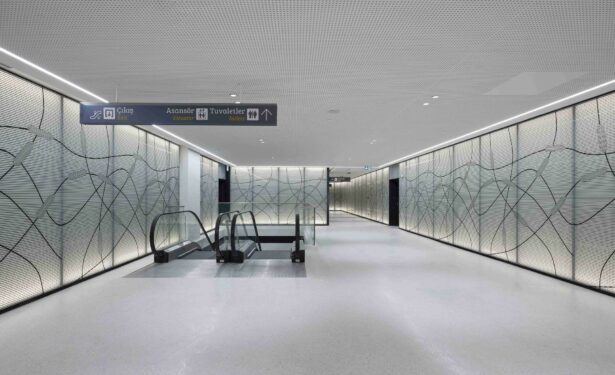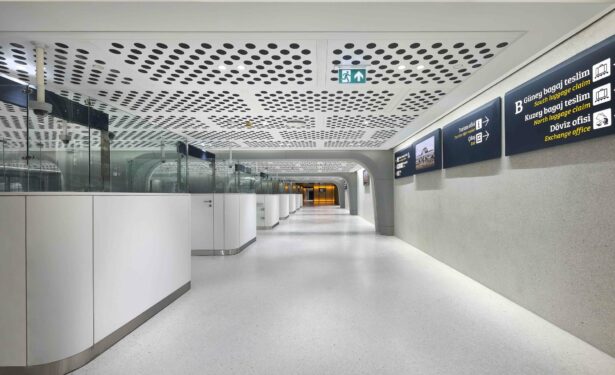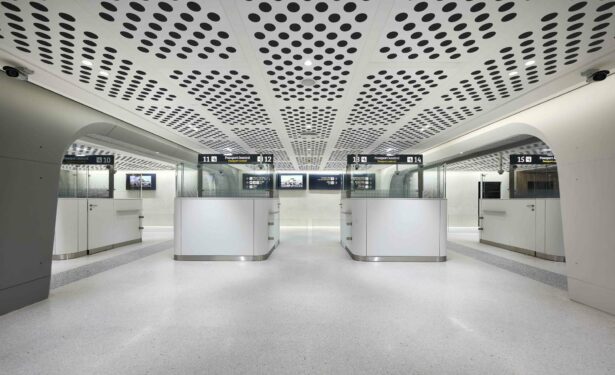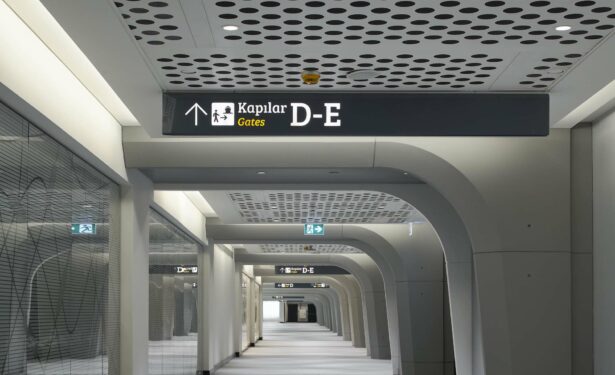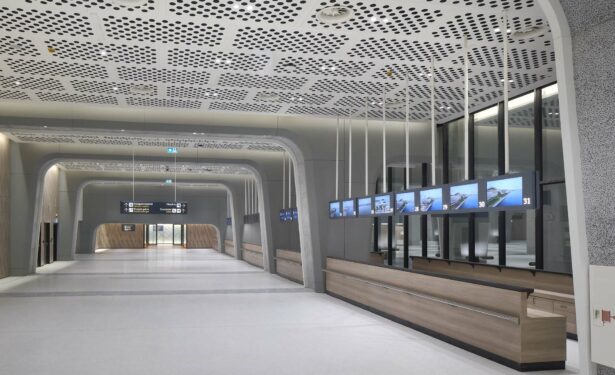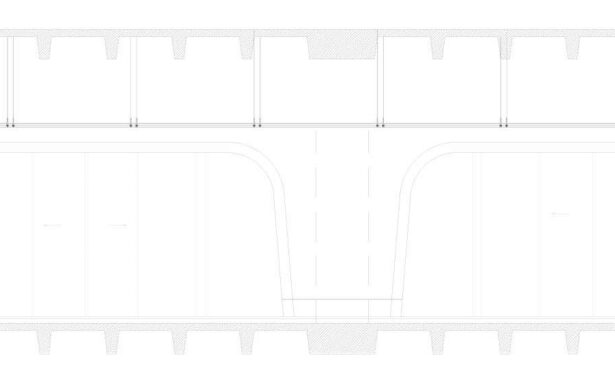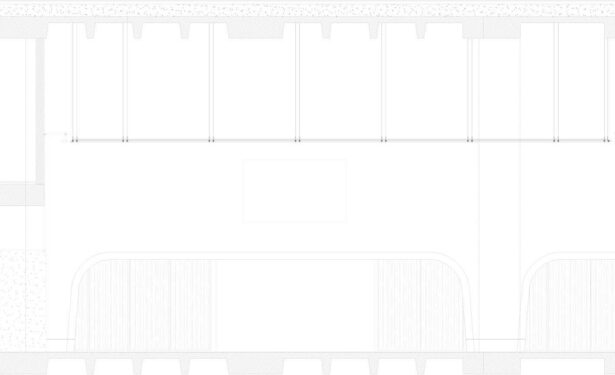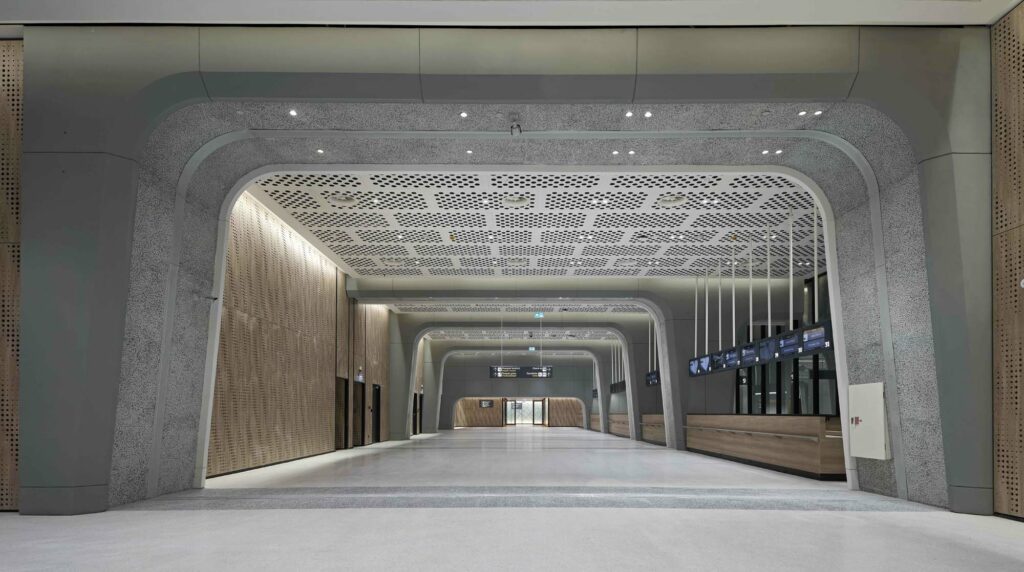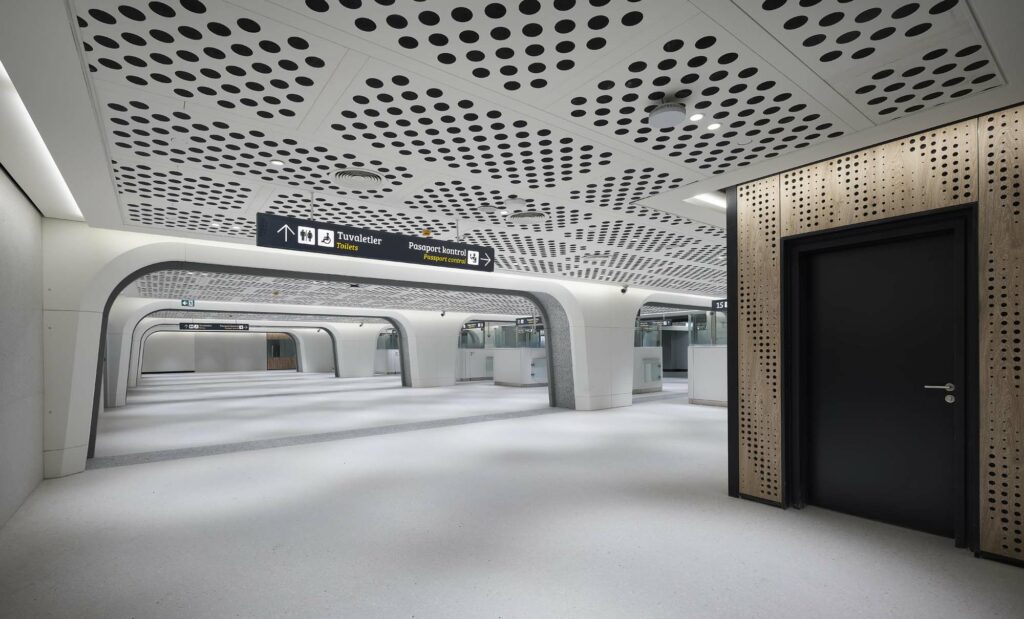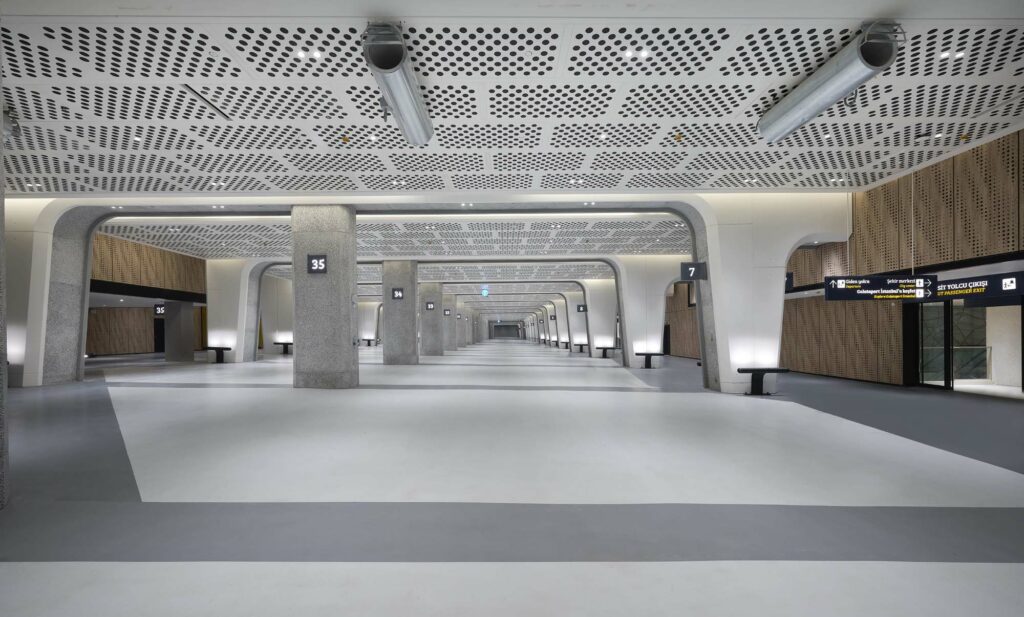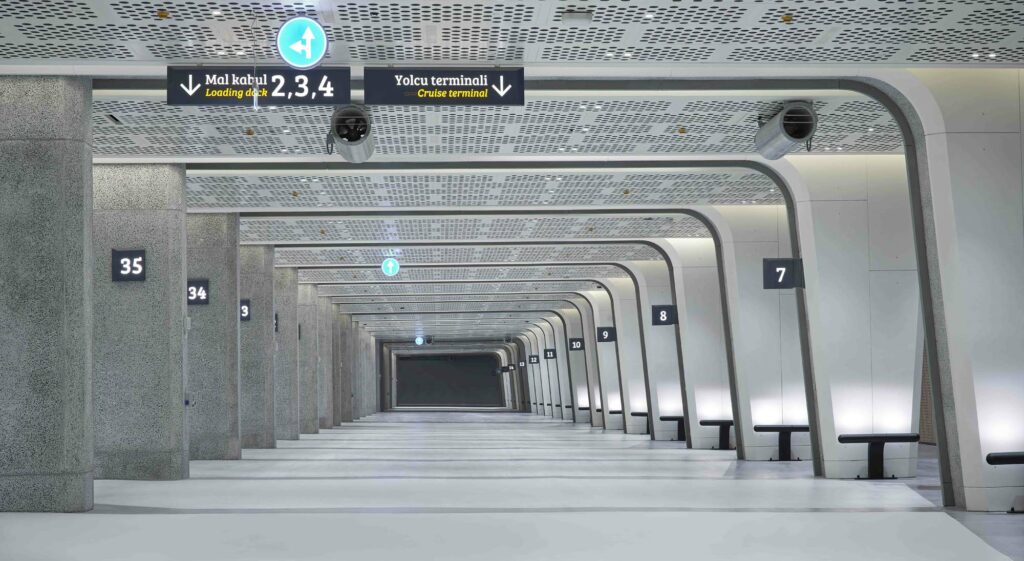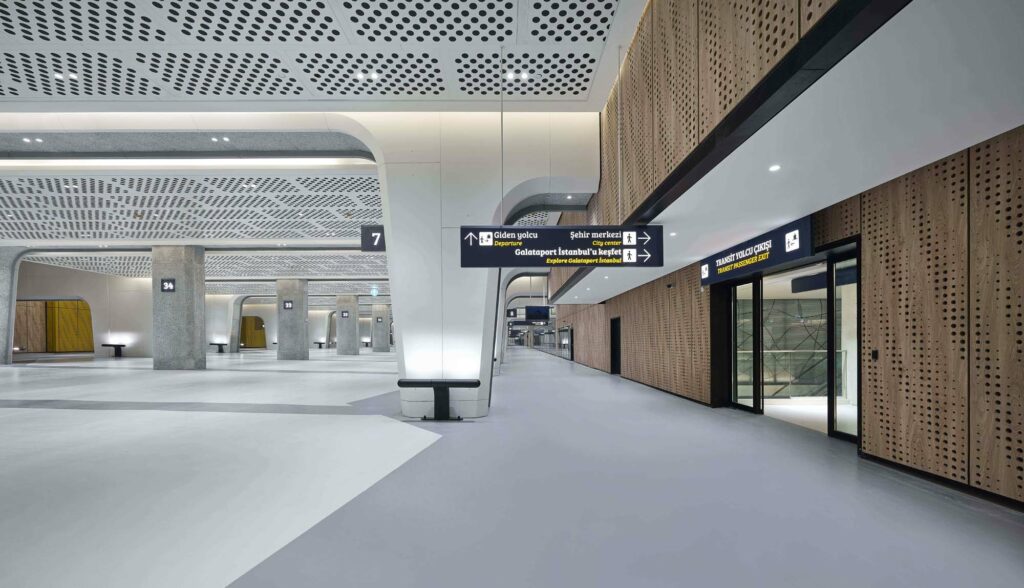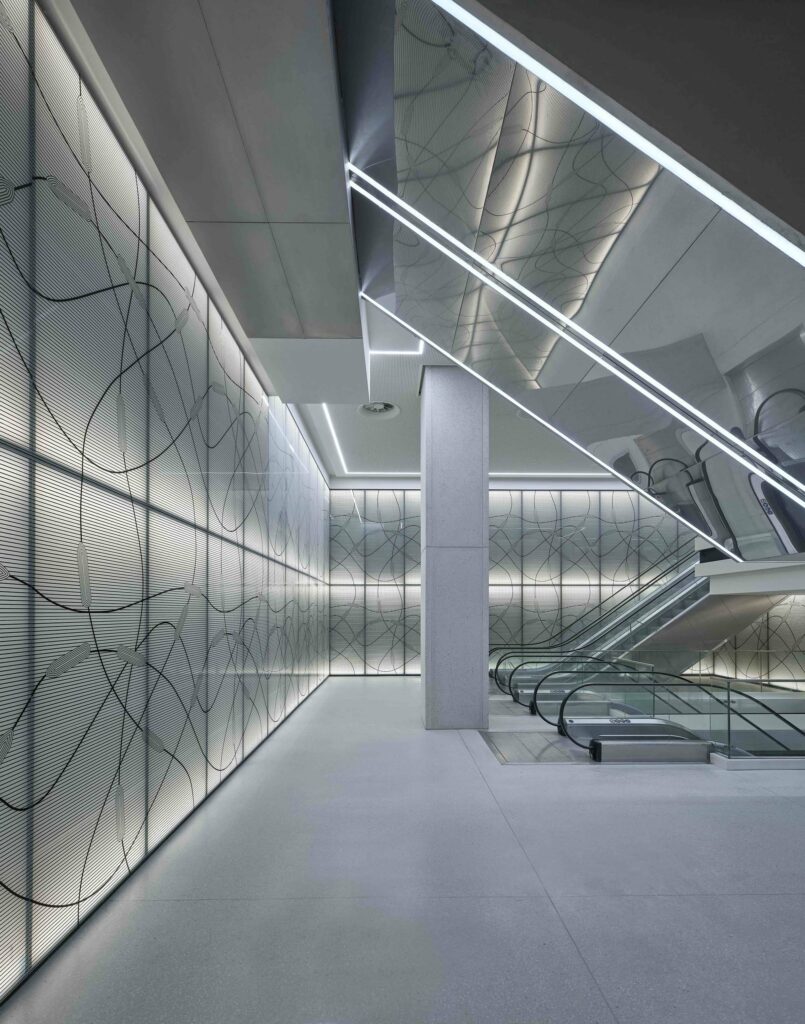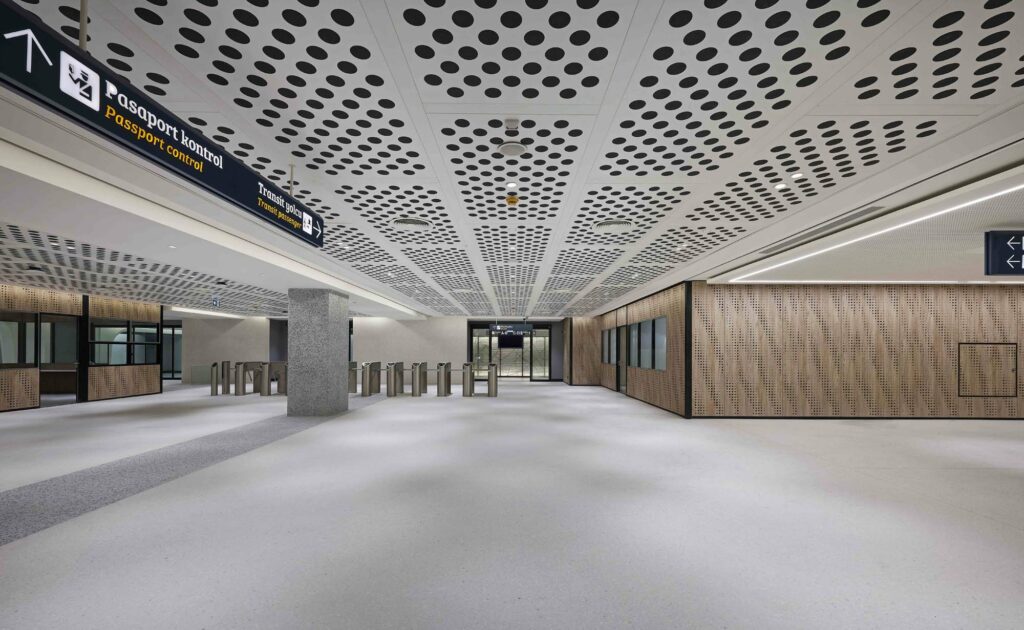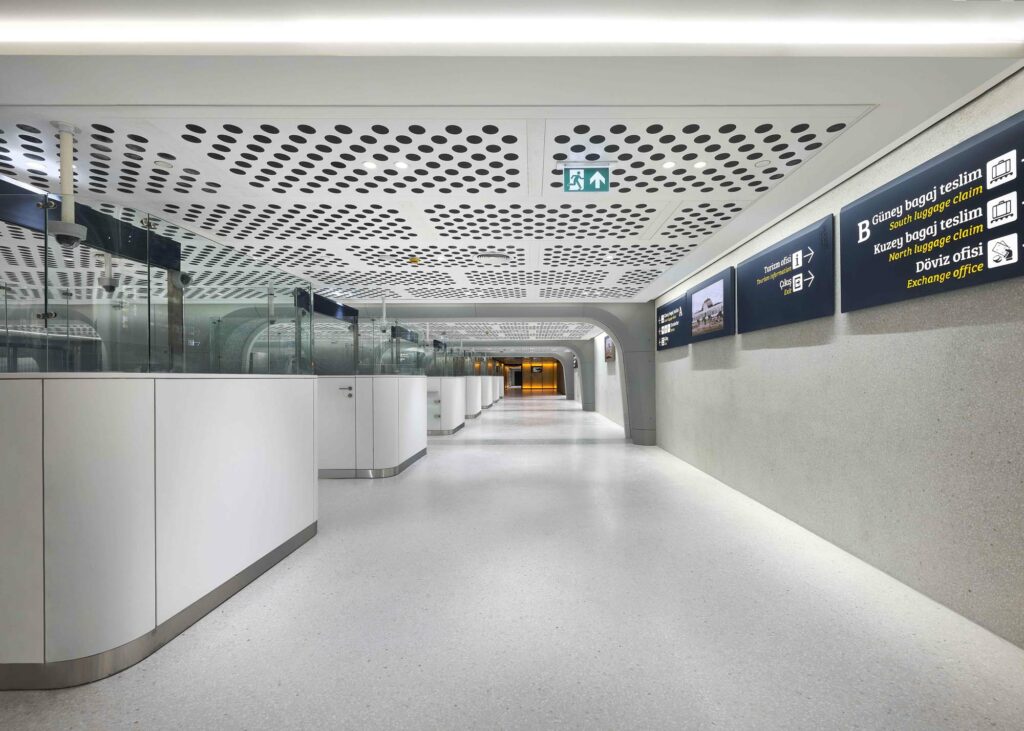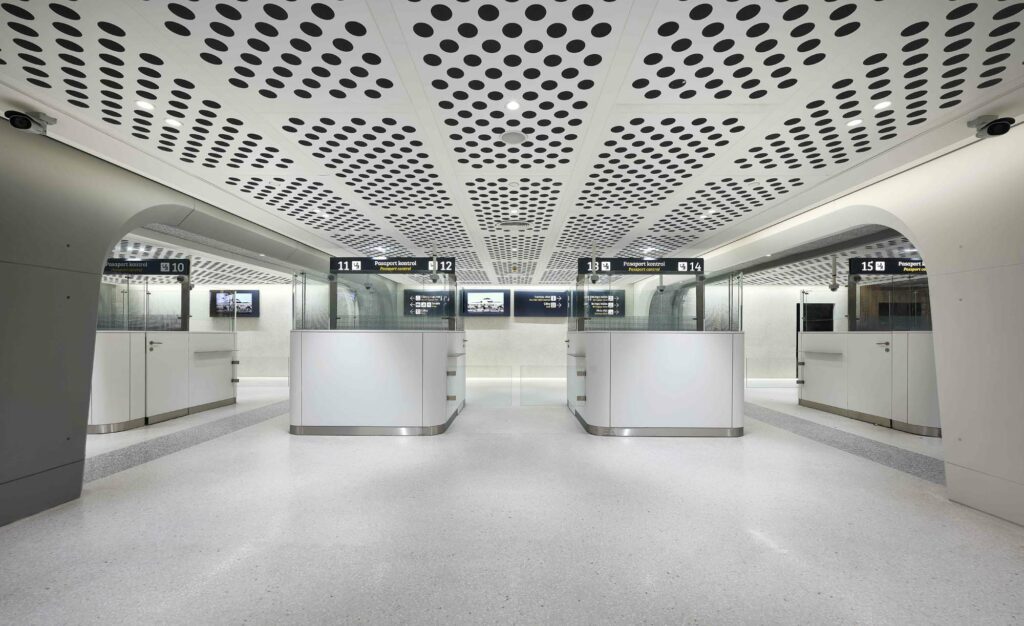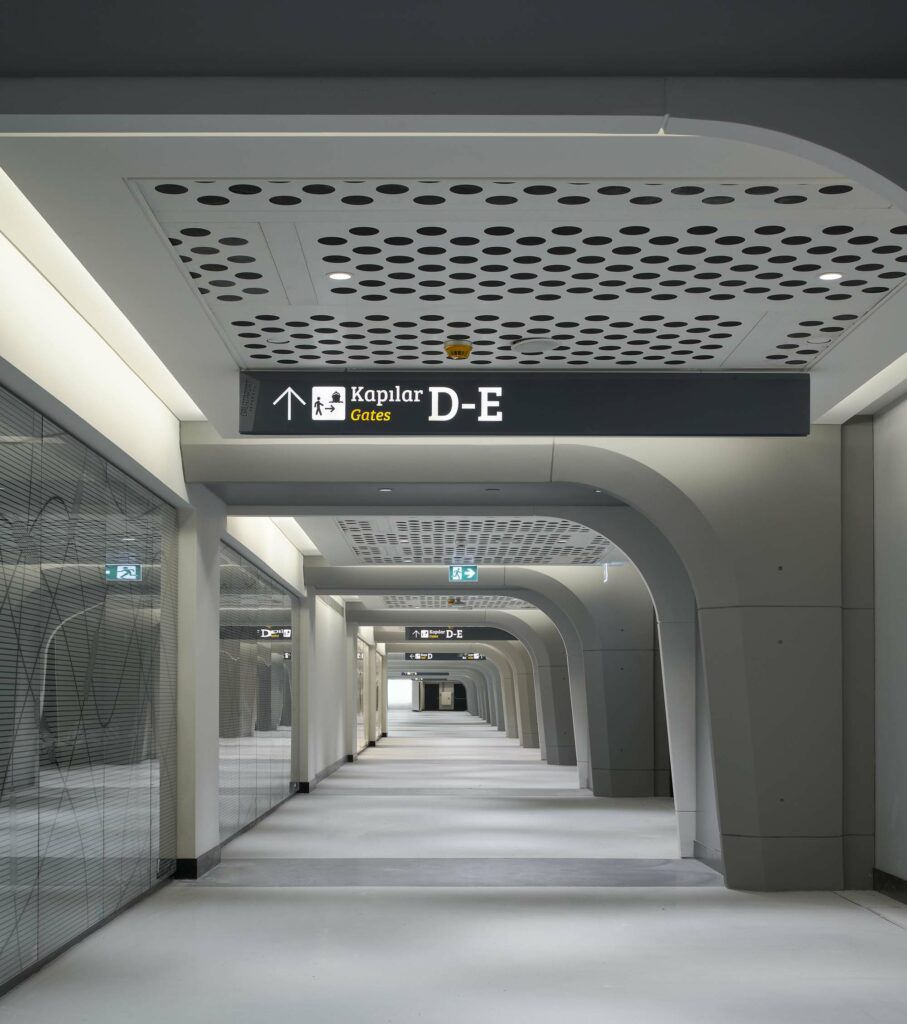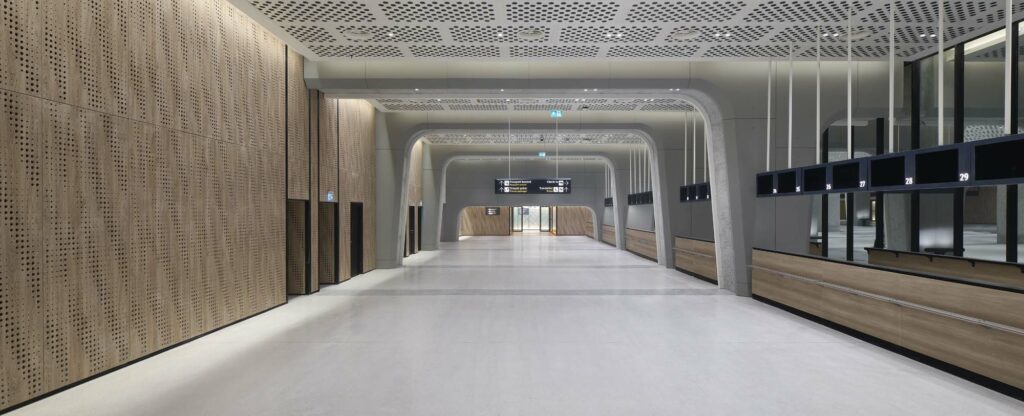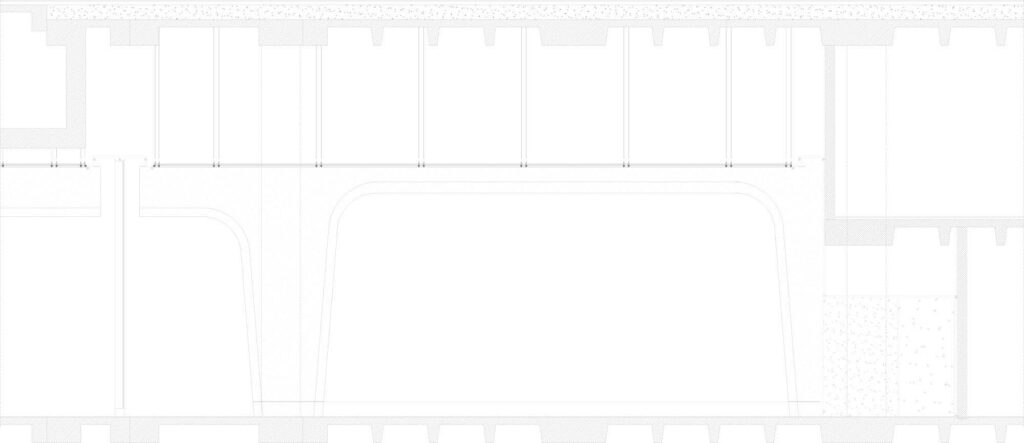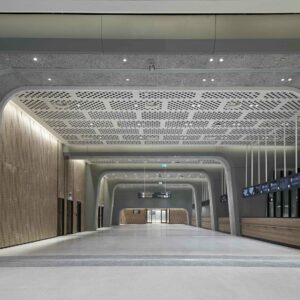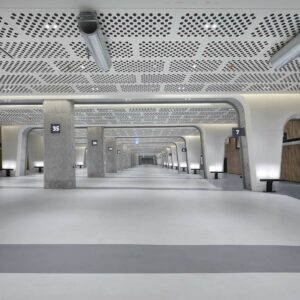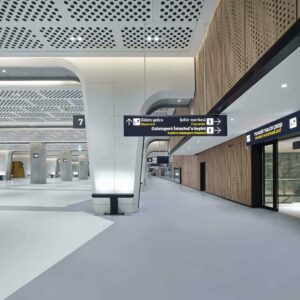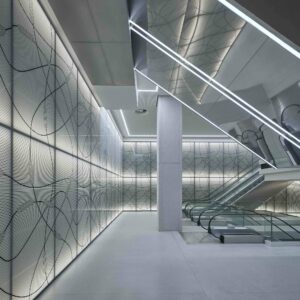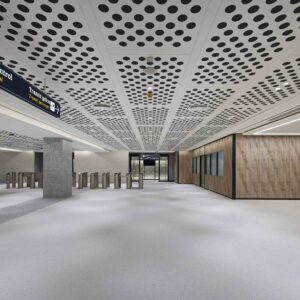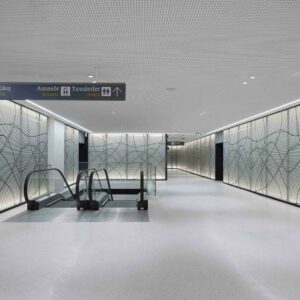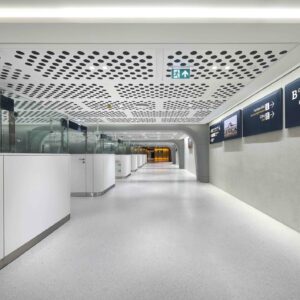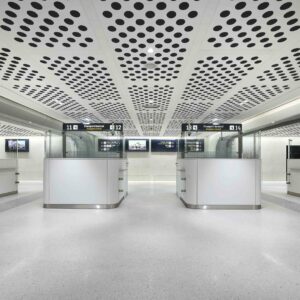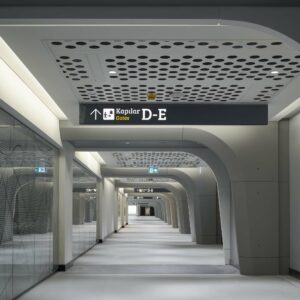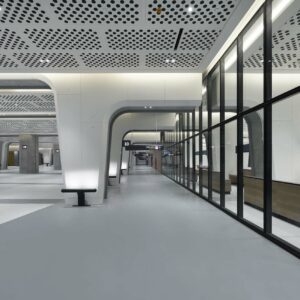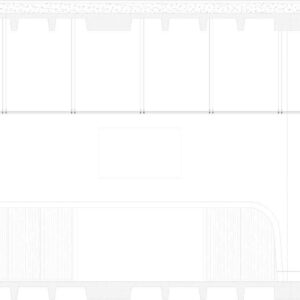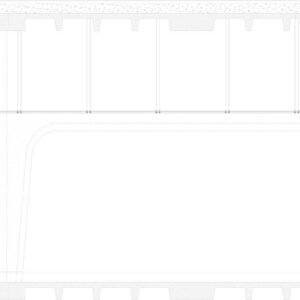
- 4 May 2025
- 14404 defa okundu.
Galataport’s Passenger Cruise Terminal
The cruise ship passenger terminal in Galataport, designed by Autoban, is inspired by the Byzantine cisterns of Istanbul.
The design brief for Galataport’s passenger cruise terminal was to present a thoughtful design taking into account the needs of a wide variety of cruise ships and passenger profiles. The terminal design needed to offer a unique and fresh experience to the expected 25 million visitors, including 7 million foreign tourists and 1.5 million cruise passengers.
Autoban approaches each project through a consideration of the geographical, historical and cultural elements of each project and the region in which it takes place. For Galataport, Autoban applied a contemporary approach while reflecting the historical significance of the port as well as the cultural texture of the surrounding neighborhood. The resulting design intends to put forward a project that is both strong aesthetically, but that also serves its purpose and function successfully with a design narrative that creates a strong and positive impression on visitors.
The underground passenger terminal has been completed to global standards and brings all terminal operations, luggage handling and passport control activities underground, allowing the waterfront to remain open to be enjoyed by visitors as a recreational area.
The project is located in the city’s prime Karaköy district, just a stone’s throw from the old city and an extension of the historic peninsula. Our design narrative was hence deeply informed by the cultural texture of the area, and specifically the ancient cisterns that were built here in the Roman and Byzantine periods as water reservoirs. Istanbul’s cisterns, such as the Basilica Cistern and the Cistern of Philoxenos, are recognized as significant cultural treasures of the city and draw in thousands of tourists yearly for their mesmerizing architecture.
The historic architecture and character of these ancient cisterns was referenced in the interior shell we built within the terminal space, through rounding the edges of the columns and structural forms of the upper floors. To provide a sense of direction within the space differentiating materials were used on the side of the terminal facing the Topkapı Palace and on the side facing the Dolmabahçe Palace, respectively the former and later administrative centers of the Ottoman Empire.
Autoban’s design intends to render the space as natural and airy as possible despite little access to natural sunlight, optimize the flow of passengers in and out of the space, and ensure a pleasant transit experience. Well thought out lighting schemes were specifically chosen to emit a silver light and accentuate this natural feeling, while a light and natural color palette was preferred for the various materials. Durable materials with larger surfaces and minimal grout joints were selected in order to withstand heavy circulation and allow easy cleaning.
Etiketler



